#original schmutz
Explore tagged Tumblr posts
Text

🌹 Draw your original characters romancing our eligible NPCs. Enter the romantic fantasy world of Blue Rose in PaperDemon’s Champions of the Summer Rose event series.
These events are done in collaboration with Green Ronin Publishing!
Draw your original characters embarking on a journey of romance, valor, and magic in the world of Blue Rose. Every drawing earns you loot and XP in the PaperDemon Art RPG.
HOW TO PARTICIPATE ▶ https://bit.ly/summer-rose-art-rpg
---
Here’s a look at Naizen
Naizen Ashary
(They/Them) Species: Sea Folk Universe: Blue Rose Background: Islander Relationship Bond: “What’s the point of work if you can’t have a little play?” Calling: The Adept (The Magician) - Mastery of the Arcane Destiny: Ten of Wands - Moderate Fate: Four of Wands - Dour Goals: To increase their information source network without compromising its secrecy. Height: 5’3”/160cm Birthday: 09/15 Sign: Virgo Likes: Partying, Self-Care, New Music Dislikes: Slobs, Schmutz, Being Alone
Naizen is a renowned performer who Spirit Dances with ribbons that can form a razor edge in combat. They are enamored with beautiful things, and can often be found at high society parties– specifically the ones that people pretend don’t happen. Their leadership of a Paperverse-wide intelligence network is a closely guarded secret, but everyone knows they have an uncanny way of making people feel comfortable telling them anything.
#art rpg#artrpg#paperdemon#art community#oc#original character#npc#original art#game art#blue rose#green ronin#fantasy art#my ocs#my oc art#my characters#oc art#seafolk
6 notes
·
View notes
Text




A MASSIVE thank you to @pokejay_mon for creating these cuties for me! I've always wanted a Pokemon based on schnauzers and they did an amazing job! The names come from schnauzer, the breed, and the German words for "dirt" (schmutz), "protect" (schützen), "protector" (schutz), and "guardian" (wächerin)
Schnutz, the puppy Pokemon
Type: Ground
Height: 1' 6"
These Pokemon were originally bred to hunt small rodent Pokemon to keep farmers' fields safe from being devoured. When humans noticed how protective they were, Schnutz were then moved to households as guard Pokemon. They are incredibly family-friendly and will protect their trainers no matter what. Their sense of smell is so strong, they can smell Bunnlby a half mile under the dirt.
Wachuer, the guard dog Pokemon
Type: Ground/ Fighting
Height: 3' 7"
Evolves when leveled up holding a black belt
These Pokemon are usually seen with police due to their strong sense of justice and protective nature. Wachuer are amazing guard dogs for families, but can be difficult to handle without proper training. Their sense of smell only heightens after evolving, but their hearing is just as good.
#pokemon#fakemon#pokemon oc#fan made pokemon#mini schnauzer#giant schnauzer#schnauzer#fan made region#my region#fan made pokemon region#wip#miderus region
18 notes
·
View notes
Text
Interesting Papers for Week 25, 2023
Effect of fasting on short‐term visual plasticity in adult humans. Animali, S., Steinwurzel, C., Dardano, A., Sancho‐Bornez, V., Del Prato, S., Morrone, M. C., … Binda, P. (2023). European Journal of Neuroscience, 57(1), 148–162.
The effects of base rate neglect on sequential belief updating and real-world beliefs. Ashinoff, B. K., Buck, J., Woodford, M., & Horga, G. (2022). PLOS Computational Biology, 18(12), e1010796.
When alternative hypotheses shape your beliefs: Context effects in probability judgments. Cai, X., & Pleskac, T. J. (2023). Cognition, 231, 105306.
Learning shapes cortical dynamics to enhance integration of relevant sensory input. Chadwick, A., Khan, A. G., Poort, J., Blot, A., Hofer, S. B., Mrsic-Flogel, T. D., & Sahani, M. (2023). Neuron, 111(1), 106-120.e10.
Population coding strategies in human tactile afferents. Corniani, G., Casal, M. A., Panzeri, S., & Saal, H. P. (2022). PLOS Computational Biology, 18(12), e1010763.
Synaptic gradients transform object location to action. Dombrovski, M., Peek, M. Y., Park, J.-Y., Vaccari, A., Sumathipala, M., Morrow, C., … Card, G. M. (2023). Nature, 613(7944), 534–542.
Are you paying attention to me? The effect of social presence on spatial attention to gaze and arrows. Ha, J., & Hayward, D. A. (2023). Attention, Perception, & Psychophysics, 85, 41–51.
Different symmetries, different mechanisms. Jennings, B. J., Tseng, T.-W. J., Ouhnana, M., & Kingdom, F. A. A. (2023). Attention, Perception, & Psychophysics, 85, 166–173.
Open-ended movements structure sensorimotor information in early human development. Kanazawa, H., Yamada, Y., Tanaka, K., Kawai, M., Niwa, F., Iwanaga, K., & Kuniyoshi, Y. (2023). Proceedings of the National Academy of Sciences, 120(1), e2209953120.
Removal of reinforcement improves instrumental performance in humans by decreasing a general action bias rather than unmasking learnt associations. Kurtenbach, H., Ort, E., Froböse, M. I., & Jocham, G. (2022). PLOS Computational Biology, 18(12), e1010201.
Stability and learning in excitatory synapses by nonlinear inhibitory plasticity. Miehl, C., & Gjorgjieva, J. (2022). PLOS Computational Biology, 18(12), e1010682.
Efficient coding theory of dynamic attentional modulation. Młynarski, W., & Tkačik, G. (2022). PLOS Biology, 20(12), e3001889.
Uncertainty alters the balance between incremental learning and episodic memory. Nicholas, J., Daw, N. D., & Shohamy, D. (2022). eLife, 11, e81679.
Mesoscopic description of hippocampal replay and metastability in spiking neural networks with short-term plasticity. Pietras, B., Schmutz, V., & Schwalger, T. (2022). PLOS Computational Biology, 18(12), e1010809.
Nonlinear cortical encoding of color predicts enhanced McCollough effects in anomalous trichromats. Robinson, A. E., Bosten, J. M., & MacLeod, D. I. A. (2023). Vision Research, 203, 108153.
Disinhibition of the orbitofrontal cortex biases decision-making in obesity. Seabrook, L. T., Naef, L., Baimel, C., Judge, A. K., Kenney, T., Ellis, M., … Borgland, S. L. (2023). Nature Neuroscience, 26, 92–106.
Minimum perturbation theory of deep perceptual learning. Shan, H., & Sompolinsky, H. (2022). Physical Review E, 106(6), 064406.
A unified theory for the computational and mechanistic origins of grid cells. Sorscher, B., Mel, G. C., Ocko, S. A., Giocomo, L. M., & Ganguli, S. (2023). Neuron, 111(1), 121-137.e13.
Integrated neural dynamics of sensorimotor decisions and actions. Thura, D., Cabana, J.-F., Feghaly, A., & Cisek, P. (2022). PLOS Biology, 20(12), e3001861.
Humans trade off search costs and accuracy in a combined visual search and perceptual task. Wagner, I., Henare, D., Tünnermann, J., Schubö, A., & Schütz, A. C. (2023). Attention, Perception, & Psychophysics, 85, 23–40.
#science#Neuroscience#computational neuroscience#Brain science#research#cognition#neurons#cognitive science#neural networks#neural computation#neurobiology#psychophysics#scientific publications
6 notes
·
View notes
Text
Hikoki-Werkzeugen & Zubehör
Hikoki, früher bekannt als Hitachi Power Tools, ist eine renommierte Marke, die eine breite Palette von Elektrowerkzeugen und Zubehör für professionelle Handwerker und Heimwerker anbietet. Die Werkzeuge von Hikoki sind bekannt für ihre hohe Leistung, Zuverlässigkeit und innovative Technologie. Hier sind allgemeine Informationen und Tipps zur Nutzung und Pflege von Hikoki-Werkzeugen, Zubehör und Ersatzteilen:
Allgemeine Informationen
Produktpalette:
Bohrmaschinen und Bohrhämmer: Hikoki bietet eine Vielzahl von Bohrmaschinen und Bohrhämmern an, die für unterschiedliche Materialien wie Beton, Holz und Metall geeignet sind.
Schrauber und Schlagbohrmaschinen: Diese Werkzeuge sind ideal für Montagearbeiten und Bauprojekte, bei denen hohe Präzision und Leistung erforderlich sind.
Winkelschleifer und Trennschleifer: Leistungsstarke Geräte zum Schneiden, Schleifen und Polieren von Materialien wie Metall, Stein und Beton.
Sägen: Hikoki bietet verschiedene Sägetypen, darunter Kreissägen, Stichsägen und Kettensägen, die für präzise Schnitte in unterschiedlichen Materialien entwickelt wurden.
Akkuwerkzeuge: Eine umfangreiche Auswahl an kabellosen Werkzeugen, die mit leistungsstarken Lithium-Ionen-Akkus betrieben werden, sorgt für Mobilität und Flexibilität auf der Baustelle.
Technologie und Innovation:
Hikoki-Werkzeuge sind mit fortschrittlicher Technologie ausgestattet, wie bürstenlosen Motoren, Multi-Volt-Akkusystemen und elektronischen Steuerungen, die für eine längere Lebensdauer, höhere Leistung und bessere Energieeffizienz sorgen.
Zubehör und Erweiterungen:
Hikoki bietet eine breite Palette von Zubehörteilen, darunter Bohrer, Schleifscheiben, Sägeblätter und Akkus, die die Funktionalität der Werkzeuge erweitern und an spezifische Aufgaben anpassen.
Vorteile von Hikoki-Werkzeugen
Hohe Leistung:
Hikoki-Werkzeuge bieten eine außergewöhnliche Leistung, die auch für anspruchsvolle Anwendungen in Bau- und Handwerksprojekten geeignet ist.
Langlebigkeit:
Die Werkzeuge sind für ihre robuste Bauweise und lange Lebensdauer bekannt, selbst unter intensiver Nutzung und schwierigen Bedingungen.
Ergonomie und Benutzerfreundlichkeit:
Viele Hikoki-Werkzeuge sind ergonomisch gestaltet, um den Benutzerkomfort zu erhöhen und Ermüdung bei langen Arbeitseinsätzen zu minimieren.
Tipps für den Kauf
Anwendungsbereich:
Wählen Sie das richtige Werkzeug für den spezifischen Anwendungsbereich. Für schwere Bauarbeiten ist ein leistungsstarker Bohrhammer sinnvoll, während für feine Montagearbeiten ein präziser Schrauber besser geeignet ist.
Leistungsmerkmale:
Achten Sie auf die technischen Spezifikationen wie Motorleistung, Drehmoment und Akkulaufzeit, um sicherzustellen, dass das Gerät Ihren Anforderungen entspricht.
Zubehör und Erweiterungen:
Überprüfen Sie, welches Zubehör im Lieferumfang enthalten ist und welche zusätzlichen Teile verfügbar sind. Hikoki bietet oft spezialisiertes Zubehör für ihre Werkzeuge an, das die Vielseitigkeit erhöht.
Nutzung und Pflege
Regelmäßige Reinigung:
Reinigen Sie die Werkzeuge regelmäßig, um ihre Leistung zu erhalten. Entfernen Sie Staub, Schmutz und Ablagerungen nach jedem Gebrauch, besonders bei Geräten, die in staubigen oder nassen Umgebungen verwendet werden.
Wartung und Inspektion:
Überprüfen Sie die Werkzeuge regelmäßig auf Abnutzung oder Beschädigungen. Schmieren Sie bewegliche Teile nach den Anweisungen des Herstellers und wechseln Sie bei Bedarf Verschleißteile wie Bürsten, Filter oder Sägeblätter.
Lagerung:
Lagern Sie die Werkzeuge in einem trockenen, sauberen Raum. Vermeiden Sie die Lagerung in extremen Temperaturen oder feuchten Umgebungen, um Korrosion und andere Schäden zu verhindern.
Ersatzteilbeschaffung
Identifikation der Ersatzteile:
Notieren Sie die Modellnummer und Seriennummer Ihres Hikoki-Werkzeugs, um die richtigen Ersatzteile zu identifizieren. Diese Informationen finden Sie in der Bedienungsanleitung oder auf dem Typenschild des Geräts.
Original-Ersatzteile verwenden:
Verwenden Sie ausschließlich Original-Ersatzteile von Hikoki, um die Kompatibilität und Sicherheit zu gewährleisten. Diese Ersatzteile sind speziell für die Werkzeuge der Marke entwickelt und getestet.
Bezugsquellen:
Kaufen Sie Ersatzteile bei autorisierten Hikoki-Händlern oder direkt über den Hikoki-Ersatzteilservice. Viele Online-Shops bieten ebenfalls eine breite Auswahl an Hikoki-Ersatzteilen an.
Sicherheitshinweise
Schutzausrüstung:
Tragen Sie stets geeignete Schutzausrüstung wie Schutzbrille, Handschuhe und Gehörschutz, wenn Sie mit Hikoki-Werkzeugen arbeiten, um Verletzungen zu vermeiden.
Richtige Handhabung:
Verwenden Sie die Werkzeuge nur gemäß den Anweisungen des Herstellers. Stellen Sie sicher, dass die Werkzeuge stabil stehen und alle Sicherheitsvorkehrungen eingehalten werden.
Elektrische Sicherheit:
Überprüfen Sie regelmäßig die Kabel und Steckdosen auf Beschädigungen. Verwenden Sie das Werkzeug niemals, wenn elektrische Komponenten beschädigt sind, und achten Sie darauf, dass es nicht in Wasser oder andere Flüssigkeiten gelangt.
Zusätzliche Tipps
Schulung und Weiterbildung:
Wenn Sie regelmäßig mit Hikoki-Werkzeugen arbeiten, nehmen Sie an Schulungen teil, um Ihre Fähigkeiten zu verbessern und sicherzustellen, dass Sie die Werkzeuge sicher und effizient nutzen.
Energieeffizienz:
Nutzen Sie die energieeffizienten Einstellungen und Funktionen der Werkzeuge, um Strom zu sparen und die Umwelt zu schonen.
Kundendienst und Garantie:
Nutzen Sie den Kundendienst und die Garantieangebote von Hikoki, wenn Probleme auftreten oder Reparaturen erforderlich sind.
Diese allgemeinen Informationen und Tipps sollen Ihnen helfen, die passenden Hikoki-Werkzeuge, Zubehör und Ersatzteile auszuwählen und optimal zu nutzen. Mit der richtigen Pflege und Handhabung können Sie viele Jahre Freude und Nutzen an Ihren Hikoki-Produkten haben und deren Effizienz und Langlebigkeit maximieren.
0 notes
Text
Image processing is an important skill to learn for photography. It is essentially the digital equivalent of developing a negative with film.
Not to be confused with image editing and image manipulation—which are also fun artistic skills you can learn if you want to get even more creative with your photos.
(Disclaimer: These are not standardized terms and different folks may use different terms and definitions to describe the same things. This is my preferred terminology and way of thinking about photo alteration tactics.)
Image processing is basically cropping, correcting exposure, adjusting the white balance, dialing in the contrast, and making sure you have true blacks and whites that span the entire histogram. You are taking the flat, low contrast RAW file (or JPEG/HEIF) and balancing all of the data to look similar to what your eyeballs saw when you took the picture. This can also include fixing minor blemishes, sensor dust, or schmutz/hair on clothing. Processing is typiclly done non-destructively in a RAW editor, so all alterations are changed in the metadata instead of changing the actual pixel information. You can undo any single change at any time without undoing anything else. When processing is complete, this can be your finished photo or a good baseline for editing.


Image editing would be more creative adjustments. Maybe you want the sky darker and the foreground brighter. You want the colors to pop so you boost the saturation beyond reality. You want to add extra drama so you crush the blacks. Or you want to bring focus to the photo subject so you place a dark vignette around them. You are still working with the data you captured, but you are pushing that data more aggressively beyond what was actually seen in the environment the photo was taken.

And image manipulation (often called photoshopping) is the addition or subtraction of data to/from a photo. Adding brand new pixels or erasing existing pixels to fundamentally change what was originally captured. This is called destructive editing because the changes can't be made only in the metadata. You can use layers and smart objects/filters to make it easier to undo individual changes, but it can be more difficult to undo a single change 20 steps back if you don't take proper precautions. Manipulation can include fixing larger mistakes like a light stand in the frame or flyaway hairs that weren't tamped down. Or compositing two photos together. Maybe swapping in a new head with a better expression. Maybe you need to remove a drunk uncle from a wedding portrait.
Or you can add a sleepy cat to a field of sunflowers.

The lines between these three levels of adjustment can get blurry, but all are valid skills to learn and can take your photography to new places. At minimum, every photographer should learn and understand how to do basic processing of their photos.
Now, you might hear some people say they just do "SOOC" because it is more authentic or naturalistic. They might even brag about how their photography skills are so amazing that no extra work is needed once they press that button.
SOOC stands for "straight out of camera" and it is a horseshit concept.
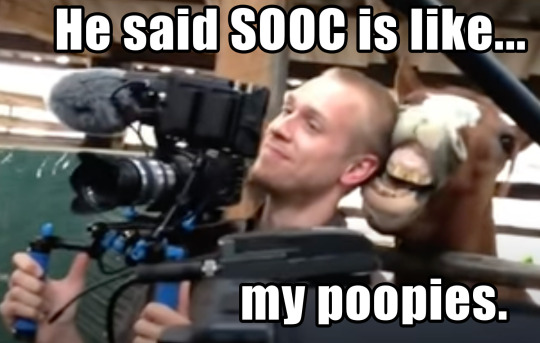
There is no such thing as an unprocessed photo.
Even with film photography, many professionals would choose special film to get certain looks and use special development techniques to push the photos beyond what was captured. One type of film might give more saturated colors. One type might give extra contrast. Choosing a brand of film was similar to choosing a picture style on your camera or a preset in your editing software. You could also "photoshop" film by dodging and burning—exposing different areas of the negative for longer or shorter time intervals.
It was all processing.
And if you take a digital photo... it is processed.
Even if all you do is hit the shutter button.
Unless you want to post a bunch of green photos on Instagram, you are not posting anything that is SOOC.

That top photo is the Bayer filter result before the data is processed with color information and "picture style" algorithms. A Bayer filter has two green pixels for every red and blue pixel, so the unprocessed version looks heavily tinted green.
So you can either let the algorithm inside your camera process the photo (which is fine), or you can do it manually in software such as Lightroom.
Either way, *something* is choosing the sharpness, contrast, saturation, and tone along with some other variables behind the scenes (sometimes referred to as a camera's "color science").
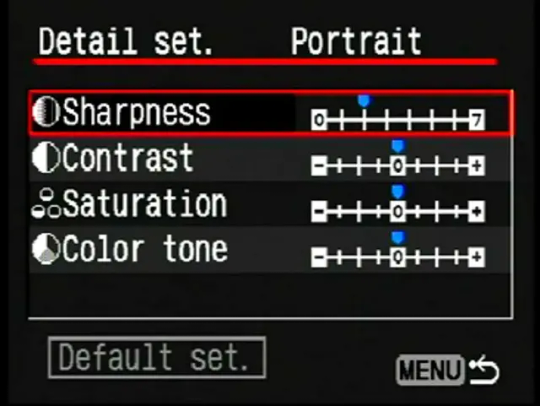
And if you think letting the robot inside your camera process your photo is somehow more "authentic" than a human being doing it... I feel you have things backward.
"Well, I use the neutral picture profile."

That is still an algorithm, friend.
A tiny robot runs around inside your camera guts and is instructed to not pull any lever, twist any knobs, or flip any switches that go beyond the predetermined 0,2,2,0,0,0 boundaries.
SO NATURAL!
There is nothing stopping you from manually processing your photo using those same boundaries. But when you do it yourself, you can account for variables the algorithm cannot. And a human being can almost always get a more authentic, true-to-life result than that robot playing with your pixels.
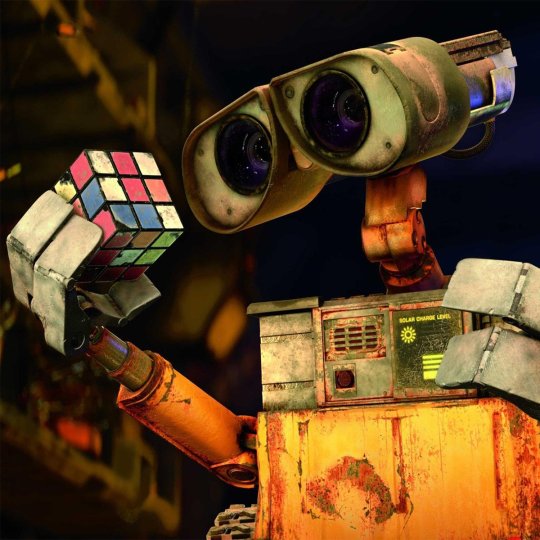
The truth is, almost every photo can benefit from some manual adjustments after the fact—even if you are going for a naturalistic result.
If you are happy with how your camera processes your photos, I am not judging or criticizing you. You can still get beautiful photos that way. Post-processing can be extra work and for some, takes away from the fun of photography. That is totally valid. I'm just asking people not brag that photos are more natural or pure or untouched.
Another common parlance in the photo education community is "get it right in camera."
I like this phrase a little better, but I still think it can be improved.
This mantra implies if you choose the proper settings before you take a photo, you will have less work to do later when processing your capture.
There is truth to that. And it is a fine goal to strive for.
But sometimes... shit happens.


People make mistakes. Cameras make mistakes. Or you have a smartphone with a plastic lens and a sensor that can fit on your fingertip and a bright sky and dark foreground is just a lot to ask of it to deal with.
One photo with perfect settings may not have captured that perfect expression that a different photo with botched settings did.
Or sometimes it is literally impossible to "get it right in camera." The environment may be too dark or too bright or both at the same time. Sometimes there are no settings that will get you the perfect exposure.
There is also a stigma against "fix it in post."
There is nothing wrong with fixing it in post. Some people are better at Lightroom/Photoshop than they are at taking photos and they are just leaning into the skill set they have more experience with. I have noticed this a lot with traditional artists that take up photography. It can take a while for their skill levels to match up.
Sometimes I will take a photo a certain way precisely because I know how to fix it in post. I will dramatically underexpose it to make sure I don't blow out the sky. Or I will take a photo that is too dark and another photo that is too bright so I can combine them later.



Or if I do not have time to dial in perfect settings, I will just use an auto mode and deal with whatever the camera gives me when I get to my computer. No shame in auto mode if you don't have the time or energy to do trial and error with manual settings.
And if anyone says "real photographers only shoot manual" you tell them to shut their gob.
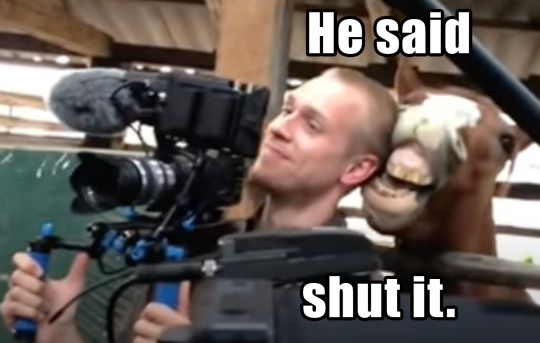
In fact, anyone who starts any sentence with, "Real photographers..." is a gatekeeper and should be ignored.
If you take photos with artistic intent on a regular basis, you are a "real" photographer.
No other qualifications necessary.
The only time "fix it in post" is a problem is when your motivation is not in service to the best end result. Sometimes post-processing *is* the best solution. But if you are just procrastinating or you want to pass the buck to another person, you should try your best to summon some willpower and get it done properly.
The original intent of the phrase was to shame people who lazily shift the workload to others but somehow it morphed into meaning any post-processing is cheating or low effort. As if complicated editing is a button-press solution. Best practice would be allocating the labor to where it makes the most sense. You have to determine which approach will give you the desired result.
So if you don't feel like learning the fundamentals and just want to fix everything later rather than educating yourself, that would be a poor photography practice.
Or if you have someone else editing your photos or videos and you don't care how much extra work they'll need to do to "fix" them.
All that said... if "SOOC" and "get it right in camera" are poor expressions, what should the mantra be?
"Get the data you need to achieve your photographic goal." -Froggie
Okay, it's not exactly prose.
In my defense, photographic concepts don't always roll off the tongue.
If you are taking photos with artistic intent, you should always have a goal—an image in your head of the finished result. In the end, cameras are just data collection tools. If you know what you can do to that data and how it can be processed, edited, and manipulated, you can imagine realistic goals before taking a photo. Through practice, trial & error, and experience you will eventually learn methods to get the data you need. The methods used are inconsequential. Whatever works for you. Auto mode, manual mode, botched settings, too bright, too dark... eventually you learn if you have what you need even if it doesn't look right "in camera."
You can look at a photo preview and be like...
"I can recover those highlights"
"I have this great expression but I like the pose better in this photo. I can just move his head to the better photo."
"This will need a cat."
Photography is a minefield of gatekeeping, outdated thoughts, inaccurate expressions, poor understanding of technology, and just... bad advice.
But if you can navigate all of that, it really is a beautiful art form.
Whether you want very natural, true-to-life results...



Or a photo needs just a little help to become what it was always meant to be...

Or you want crazily photoshopped images that look nothing close to reality...


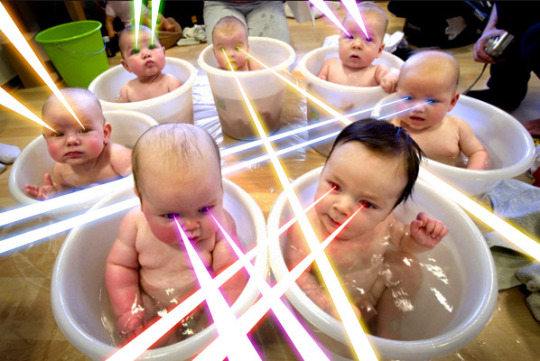
it is all valid and all wonderful.
So go forth, set a goal, and get the data you need.










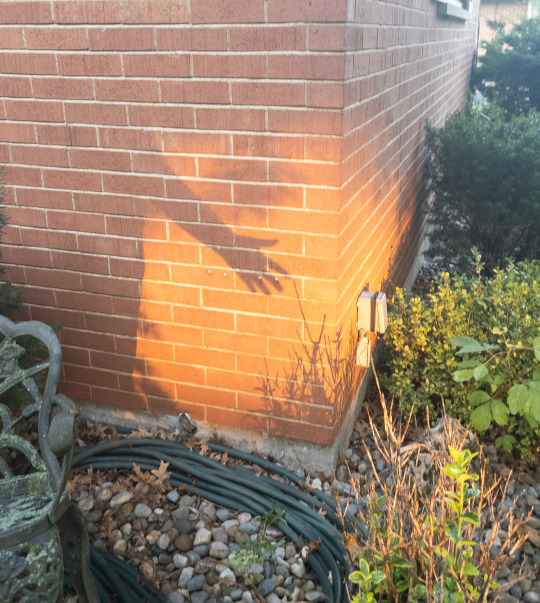



















A while back on a post about a free photography course, a few people wondered if they could use their smartphone to practice.
And hopefully the above shows that you absolutely can.
Sometimes it takes a little post-processing to get good results, but that is the same with any camera. Though phone photos probably take me more than twice as long to achieve a finished product. Better cameras don't automatically make your photos better, but they do make getting good photos *easier*—especially in difficult lighting.
Many modern smartphones have a "RAW" photo mode with adjustable manual settings. Saving a RAW version of your photos allows you to continually learn and practice and return to those photos later on to re-process them with your improved experience.
A RAW capture has a lot more data than a compressed JPEG and gives you extra latitude in processing your photos. All of the editing done to a RAW file is saved in metadata instead of being baked into the pixels. So you can undo any individual change at any time without undoing changes made after that particular edit. And even if you save the file and close the program, you still have the power of undo when you open the file again.
With RAW you can more easily recover extra detail, lift dark shadows, bring back blown highlights, and restore color to blue skies that photographed pure white. (Often you can do that with a JPEG too, it just depends on the photo.)
The main downsides to JPEG editing are you can't non-destructively change the white balance after the fact, you have less dynamic range to alter shadows and highlights, and you can't make as many drastic edits before the image loses integrity.
A wise man once said, "The best camera is the one you have with you."
And a wise frog once said, "Shoot RAW and learn Lightroom because a human being can still outperform the algorithms of computational photography."
420 notes
·
View notes
Note
this was typed in my original language ✨german✨✨
Hallo, mein Name ist Skyler! und ich habe mich gefragt, ob ich einen Draco Also verdeckt er es mit gespieltem Hass, aber dann sagt er etwas, das sie wirklich traurig macht, und dann passiert das Geständnis und alles, yk lol. und möglicherweise etwas Schmutz, wenn es eine Option ist? Wenn nicht, ist das in Ordnung 😂✨ Ich wünsche Ihnen einen schönen Tag und werde mich in Zukunft wahrscheinlich noch einmal bei Ihnen melden!
Danke für den Vorschlag! Soll ich die Story trotzdem auf Englisch schreiben oder mich mal an einer auf Deutsch versuchen (wenn ich überhaupt mal wieder zum Schreiben hier komme, ich bin gerade leider etwas im Stress)?
0 notes
Text
Driven to write by a word
Sometimes, inspiration comes as simply as that. A single word demands several hundred in response.
Schmutz. It’s a word of Yiddish and German origins, and for some reason, it popped into my head this morning. If it’s a word unfamiliar, it’s often used to describe a bit of unidentified something on a person. Usually their face. For many of us, that’s followed by your mother wetting her thumb with saliva to wipe it away. Ah, mothers. So loving. So sanitary. In my part of the world, it’s an…
View On WordPress
0 notes
Text
Glas, ein Symbol der Transparenz und Eleganz, findet sich in vielfältigen Bereichen unseres Alltags, von Fenstern über Duschkabinen bis hin zu Glasoberflächen in Innenräumen. Doch trotz seiner beeindruckenden Erscheinung ist Glas anfällig für unschöne Flecken, Kalkablagerungen und Verunreinigungen. Hier setzt Cleanglas' bahnbrechende Glasversiegelung an, um Ihnen eine klare Sicht und mühelose Pflege zu bieten. In diesem Blogbeitrag werden wir die Wunder der Glasversiegelung enthüllen und zeigen, wie Cleanglas diese Technologie nutzt, um die Brillanz Ihrer Glasoberflächen zu bewahren.
Das Dilemma der Glasoberflächen
Glas mag transparent sein, aber seine Anfälligkeit für Verschmutzungen ist allzu real. Fingerabdrücke, Staub, Kalkablagerungen und Wasserflecken können die Eleganz von Glas trüben und die klare Sicht beeinträchtigen. Herkömmliche Reinigungsmethoden erfordern oft mühevolle Arbeit und hinterlassen oft Spuren.
Cleanglas' fortschrittliche Glasversiegelungstechnologie
Cleanglas hat die Herausforderungen erkannt, denen Glasoberflächen ausgesetzt sind, und eine Lösung entwickelt, die überzeugende Ergebnisse liefert. Unsere Glasversiegelung verwendet Nanopartikel, um eine unsichtbare Schutzschicht auf der Glasoberfläche zu bilden. Diese Schicht sorgt dafür, dass Wasser und Schmutz einfach abperlen, anstatt sich festzusetzen. Dadurch wird nicht nur die Sicht auf das Dahinterliegende klarer, sondern auch die Reinigung erleichtert.
Klares Sehen, mühelose Pflege
Die Glasversiegelung von Cleanglas bietet mehr als nur eine klare Sicht – sie erleichtert auch die Pflege. Durch die Abweisung von Wasser und Schmutz bleiben Glasoberflächen länger sauber und erfordern weniger häufige Reinigung. Mit einem sanften Wisch können Sie Staub und Verschmutzungen mühelos entfernen, ohne aggressive Reinigungsmittel verwenden zu müssen.
Brillanz und Eleganz bewahren
Eine der beeindruckendsten Eigenschaften der Cleanglas-Glasversiegelung ist ihre Fähigkeit, die ursprüngliche Brillanz und Eleganz von Glasoberflächen zu bewahren. Ob es sich um Fenster, Glastüren oder Spiegel handelt – die Schutzschicht betont die Klarheit und Glätte des Glases, sodass Sie die wahre Schönheit jedes einzelnen Details genießen können.
Nachhaltigkeit und Zukunftsfähigkeit
Die Glasversiegelung von Cleanglas ist nicht nur eine Lösung für den Augenblick, sondern auch eine Investition in die Zukunft. Weniger Reinigung bedeutet weniger Verwendung von Reinigungsmitteln und weniger Wasser, was zu einer umweltfreundlicheren Lebensweise beiträgt. Darüber hinaus verlängert die Schutzschicht die Lebensdauer Ihrer Glasoberflächen, was zu weniger Verschleiß und Abfall führt.
Schlussgedanken: Klarheit und Leichtigkeit genießen
Die Glasversiegelung von Cleanglas ist der Schlüssel, um die Schönheit und Klarheit Ihrer Glasoberflächen zu bewahren. Mit ihrer fortschrittlichen Technologie bietet sie nicht nur einen beeindruckenden Schutz, sondern auch mühelose Pflege. Erleben Sie die Freude an klaren Sichten und minimaler Reinigungsarbeit, während Sie die Brillanz von Glas in vollen Zügen genießen.
Erleben Sie die Magie der Glasversiegelung von Cleanglas. Kontaktieren Sie uns noch heute, um mehr darüber zu erfahren, wie wir die Pflege Ihrer Glasoberflächen revolutionieren können.
0 notes
Text
Ein Ledersofa ist nicht nur ein komfortables Möbelstück, sondern auch ein Statement für Eleganz und Stil. Damit Ihr Ledersofa über die Jahre hinweg seinen Glanz und seine Schönheit behält, ist die richtige Pflege unerlässlich. In diesem Artikel möchten wir Ihnen einige Tipps und Tricks zur Lederpflege für Sofas vorstellen, damit Sie lange Freude an Ihrem hochwertigen Möbelstück haben.
Regelmäßiges Staubsaugen: Beginnen Sie die Lederpflege für Ihr Sofa, indem Sie es regelmäßig mit einem weichen Bürstenaufsatz absaugen. Dadurch werden Staub, Schmutz und lose Partikel entfernt, die sich im Laufe der Zeit ansammeln können.
Sanfte Reinigung: Verwenden Sie für die Reinigung Ihres Ledersofas ein mildes Leder Reinigungsmittel, das speziell für Leder entwickelt wurde. Tragen Sie das Reinigungsmittel mit einem weichen, sauberen Tuch auf und arbeiten Sie es vorsichtig in das Leder ein. Achten Sie darauf, nicht zu stark zu reiben, um Kratzer zu vermeiden.
Fleckenentfernung: Falls Ihr Ledersofa Flecken aufweist, ist es wichtig, diese schnellstmöglich zu behandeln. Verwenden Sie spezielle Lederfleckenentferner oder milde Seife, um den Fleck sanft zu reinigen. Testen Sie das Produkt immer zuerst an einer unauffälligen Stelle, um sicherzustellen, dass es das Leder nicht beschädigt.
Feuchtigkeitspflege: Um das Leder Ihres Sofas geschmeidig zu halten, ist es ratsam, es regelmäßig zu befeuchten. Verwenden Sie dafür eine hochwertige Lederpflegecreme oder ein Lederpflegeöl. Tragen Sie das Produkt dünn auf das Leder auf und polieren Sie es anschließend mit einem weichen Tuch. Dies hilft dabei, das Leder mit Feuchtigkeit zu versorgen und vor Austrocknung zu schützen.
Sonnenschutz: Platzieren Sie Ihr Ledersofa nicht direkt in der Sonne oder in der Nähe von Hitzequellen wie Heizungen. Langfristige Einwirkung von UV-Strahlen kann das Leder ausbleichen und austrocknen. Verwenden Sie gegebenenfalls Vorhänge oder Jalousien, um das Sofa vor direkter Sonneneinstrahlung zu schützen.
Vorsicht bei scharfen Gegenständen: Vermeiden Sie den Kontakt Ihres Ledersofas mit scharfen Gegenständen wie Scheren, Haustierkrallen oder spitzen Schnallen. Diese können Kratzer oder Beschädigungen auf der Lederoberfläche verursachen.
Professionelle Reinigung: Wenn Ihr Ledersofa stark verschmutzt ist oder tiefe Flecken hat, kann es ratsam sein, professionelle Hilfe in Anspruch zu nehmen. Ein Experte für Ledermöbelreinigung kann das Sofa gründlich reinigen und aufbereiten, um seine ursprüngliche Schönheit wiederherzustellen.
Indem Sie diese Tipps zur Lederpflege für Sofas befolgen, können Sie sicherstellen, dass Ihr Ledersofa über die Jahre hinweg gut aussieht und seine Qualität behält. Denken Sie daran, regelmäßige Pflege und Aufmerksamkeit zu geben, um lange Freude an Ihrem Ledersofa zu haben. Ein gut gepflegtes Ledersofa ist nicht nur ein Blickfang, sondern auch ein bequemer Ort zum Entspannen und Genießen in Ihrem Zuhause.
1 note
·
View note
Text
"Yesterday's" Comic> Project Superpowers Chapter Two #0
BW's "Yesterday's" Comic> Project Superpowers Chapter Two #0
“Why do I have to clean the schmutz out of your RPG table?” Project Superpowers Chapter Two #0 Dynamite Entertainment (June, 2009) information comes from the Grand Comics Database because the comiXology version doesn’t have any of it. Also, no titles. WRITERS: Alex Ross (also covers artist) & Jim Kruegar MAIN STORY ARTIST: Edward Salazar MAIN STORY COLORIST: Victor Ramones BLACK TERROR ORIGIN…

View On WordPress
1 note
·
View note
Photo





The 4/5 of The Troubleshooters + our great DM
These were meant to be christmas gifts but I finished them late as usual hahaha. Love you guys and here’s to a long, wonderful campaign!! @kitastrophee @infinitedreams @casey-face @thefirstmccloud @fizznak
-
Dodge Cinders: Paladin, The Judgement Victorious: Ranger, The Tower Rowan Bladefeather: Bard, The Magician Goiya: Cleric, The Fool Dan: The Dungeon Master, The World
-
Textures
Gold Leaf Tutorial
References used
#Dungeons and Dragons#dnd#paladin#rogue#ranger#bard#cleric#dm#dungeon master#tarot card#art#istus#original schmutz
19 notes
·
View notes
Text
Quigg Geräte im Fokus: Alles, was Sie wissen müssen
Der Schlüssel zu Quigg: Geräte und Ersatzteile leicht gemacht
Quigg Equipment: Wartung und Pflege für dauerhafte Leistung
Allgemeine Informationen zu Quigg Geräten und Ersatzteilen
Quigg ist eine Marke, die für eine Vielzahl von Haushaltsgeräten bekannt ist, darunter Küchenmaschinen, Staubsauger, Kaffeemaschinen und viele andere praktische Geräte. Diese Geräte sind dafür ausgelegt, den Alltag zu erleichtern und effizienter zu gestalten. Um die Lebensdauer und Funktionalität dieser Geräte zu maximieren, ist es wichtig, die passenden Ersatzteile zu kennen und regelmäßig Wartungsarbeiten durchzuführen.
Tipps zur Auswahl und Nutzung von Quigg Geräten
Bedarfsgerechte Auswahl: Wählen Sie Quigg Geräte basierend auf Ihren spezifischen Bedürfnissen und dem Einsatzbereich. Ob Küchenmaschinen für die Zubereitung von Mahlzeiten oder Staubsauger für die Reinigung, die Auswahl sollte Ihre Anforderungen erfüllen.
Bedienungsanleitung lesen: Bevor Sie ein neues Gerät verwenden, lesen Sie die Bedienungsanleitung sorgfältig durch, um alle Funktionen und Sicherheitshinweise zu verstehen.
Energieeffizienz: Achten Sie auf die Energieeffizienz der Geräte. Modelle mit niedrigerem Energieverbrauch können langfristig Kosten sparen und die Umwelt schonen.
Platzbedarf: Berücksichtigen Sie den Platzbedarf der Geräte in Ihrer Küche oder Ihrem Haushalt. Kompakte Modelle sind ideal für kleinere Räume.
Regelmäßige Nutzung: Nutzen Sie Ihre Geräte regelmäßig und entsprechend ihrer Bestimmung, um eine lange Lebensdauer und optimale Leistung zu gewährleisten.
Tipps zur Pflege und Wartung von Quigg Geräten
Regelmäßige Reinigung: Reinigen Sie Ihre Geräte nach jedem Gebrauch gründlich, um Lebensmittelreste, Staub und Schmutz zu entfernen. Dies verhindert Verstopfungen und sorgt für eine längere Lebensdauer.
Filterwechsel: Bei Geräten wie Staubsaugern oder Kaffeemaschinen sollten die Filter regelmäßig gewechselt oder gereinigt werden, um die Effizienz zu erhalten und eine einwandfreie Funktion zu gewährleisten.
Schmiermittel verwenden: Verwenden Sie bei Geräten mit beweglichen Teilen, wie Küchenmaschinen, regelmäßig Schmiermittel, um die Mechanik geschmeidig zu halten und Verschleiß zu reduzieren.
Aufbewahrung: Lagern Sie die Geräte an einem trockenen, staubfreien Ort, um sie vor Schäden zu schützen. Abnehmbare Teile sollten sicher verstaut werden, um Verlust oder Beschädigungen zu vermeiden.
Sicherheitsüberprüfungen: Überprüfen Sie regelmäßig alle elektrischen Anschlüsse und Kabel auf Schäden, um die Sicherheit zu gewährleisten. Defekte Kabel sollten sofort ausgetauscht werden.
Tipps zum Kauf und Austausch von Quigg Ersatzteilen
Kompatibilität prüfen: Stellen Sie sicher, dass die Ersatzteile, die Sie kaufen, mit Ihrem spezifischen Quigg Gerät kompatibel sind. Überprüfen Sie Modellnummern und Spezifikationen sorgfältig.
Originalteile bevorzugen: Verwenden Sie nach Möglichkeit Original-Ersatzteile von Quigg Küchenmaschine, um die beste Passform und Funktionalität zu gewährleisten.
Ersatzteile lagern: Halten Sie gängige Ersatzteile wie Filter, Dichtungen und Klingen auf Vorrat, um bei Bedarf schnell Reparaturen durchführen zu können.
Anleitungen befolgen: Folgen Sie den Anweisungen des Herstellers für den Austausch von Ersatzteilen, um sicherzustellen, dass die Reparaturen korrekt und sicher durchgeführt werden.
Fachmann konsultieren: Bei komplexen Reparaturen oder Unsicherheiten ist es ratsam, einen Fachmann zu Rate zu ziehen, um Beschädigungen und Sicherheitsrisiken zu vermeiden.
Mit diesen Informationen und Tipps können Sie Ihre Quigg Geräte optimal nutzen und pflegen, um deren Lebensdauer zu maximieren und die bestmögliche Leistung zu erzielen. Regelmäßige Wartung und der rechtzeitige Austausch von Ersatzteilen tragen dazu bei, dass Ihre Haushaltsgeräte zuverlässig und effizient arbeiten.
0 notes
Photo

Großreinemachen
Ich wünsche mir einen großen Besen, mit ihm fegte ich hinaus, was gewesen. Die schönen Dinge ließ ich liegen, es schadete nicht, wenn sie blieben. Doch die Schlechten sollen hinaus aus mir aus meinem Gedankenhaus. So, dass ich neu beginnen mag, wie ein leeres Heft, das einst vor mir lag. Jeden Tag würde ich beschreiben, damit mir diese Erinnerungen bleiben. Doch solch einen Besen gibt es nicht, die Erfahrung aus mir spricht. So lerne ich mich zu akzeptieren, mich mit dem Schmutz zu arrangieren.
*** Dieses ist mein Beitrag zum #lyrikapril von @cleardance Thema: #schmutz ***
2021/#112
#clear-dance #SangundKlanglos #alarmstuferot #ohnekunstundkulturwirdsstill #instaquerkopf #gedichte #poetry #original #selbstgeschrieben #instalyrik #poetsoninsta #instapoetry #poetryisnotdead #deutschegedichte #deutschepoesie #deutschelyrik #selbstgelesen #gelesen #corona #wirbleibenzuhause #stayathome #zuhausebleiben https://www.instagram.com/p/CN8Q_3fhHA_/?igshid=jr2gwv9cin8t
#lyrikapril#schmutz#112#sangundklanglos#alarmstuferot#ohnekunstundkulturwirdsstill#instaquerkopf#gedichte#poetry#original#selbstgeschrieben#instalyrik#poetsoninsta#instapoetry#poetryisnotdead#deutschegedichte#deutschepoesie#deutschelyrik#selbstgelesen#gelesen#corona#wirbleibenzuhause#stayathome#zuhausebleiben#clear-dance
0 notes
Text
Guilt of Prosperity
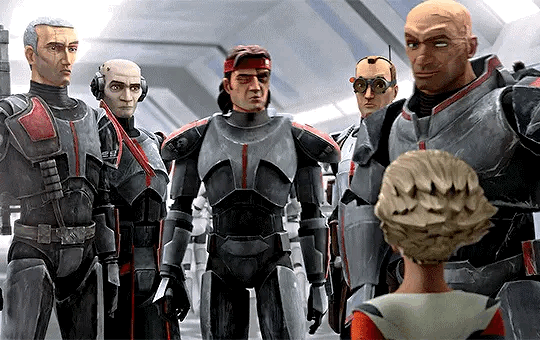
Pairing: The Bad Batch x Reader (Polyam)
Summary: Part two to What Isn’t Noticed. The Jedi have come to visit Kamino and when you finally get a moment with one of them, the subject of your past is brought into light.
Warning: ANGST, mentions of slavery, mentions of death and sickness, sadness
Word Count: 1336
Pt I: What Isn't Noticed, Pt III: Lodestar
A/N: Caetum is a planet I made up for this
XXXXXXX
You walked down the corridor, trying to find one of the Kaminoans to discuss something. When you found them, you saw that they were in the hangar with most of the troopers. You were confused at first and walked up cautiously finally seeing why they were gathered. Captain Rex was talking with a few strangers, but as you looked closer and saw the grey weapons at their hips, you realized they were from the Jedi Order. A gentle hand found your shoulder and you turned to see Hunter with the rest of the batch. He smiled before averting his eyes forward as Lama Suu greeted the jedi with Nala Se and Taun We by his side. They talked briefly before most of the other troopers were dismissed. Hunter urged you away from the hangar and the lot of you headed to the mess hall. You found a table and waited for them to get their food. As you looked over your holopad, a tray was set in front of you, which you suspected to be one of the boys, but instead it was Noco.
“Hey! Did you see that the Jedi are visiting?”
You nodded but knew deep inside that you had to shoo him away before one of your lovers picks a fight…
“Yeah, Noco.” You sighed and looked down at your holopad, “Sorry, love. I have to do some preparation for my next mission with 99, is it alright if we catch up later?”
He nodded, picked up his tray, and headed over to where some of his squadron were sitting. You felt a rush of relief and swiped through your holopad and in a matter of minutes, the boys sat down at the table. Crosshair looked over at the table where Noco was before looking over at you.
“What did he want?”
“He was just wondering if I saw the Jedi. That’s it.” You explained simply as you swiped through your holopad still. He said nothing else, eating his food quietly. Wrecker was munching down on multiple different things which caused some schmutz to get on Cross and Tech. They protested and scolded their brother. You looked at them and smiled with a shake of your head. The commotion started to die down along with the other clones when everyone averted their eyes to one of the doorways. Lama Suu had walked in with the visiting Jedi. He walked over to the table where Noco’s squadron and they stood, saluting the jedi.
“What’s the big deal with the Jedi? What even is the Force?” Wrecker wondered as he watched them converse.
“I believe it is only found in the Jedi depending on the certain amount of midichlorians they have.”
“No… it’s not only found in the Jedi…” You whispered, placing your holopad down, “It’s found in all of us. It’s what connects all living things… connects their similarities and differences. You’re right, Tech, there is a dependability of midichlorian count, which makes them closer to the Force than others like you and me.”
They all looked at you in awe as you explained. Before anyone can say anything else, a voice came from behind you.
“You are very familiar with the Force, my friend.”
You stood and saluted him, “Thank you, General Kenobi.”
“You are very familiar with me but I don’t think we’ve met.”
“I’ve lived on Kamino for a while now and I used to teach the younger clones, but now I’m a communications officer for Clone Force 99. The knowledge of the Jedi Order is very important to know. Many of my students are now in the squadrons under your order and General Skywalker’s. They talk highly of you both.”
“Where are you originally from?”
You hesitated before answering, “One of the slave planets on the outer rim, Caetum, General.”
“Ah...you were saved during the siege led by Jedi Master Windu. That was quite a while ago. I hope your people have prospered like you have since then.”
“So do I, General Kenobi.”
“Please, go back to your meal. It was nice meeting you, officer.”
“You as well, General.”
He walked away and you sat back down. The boys looked at you with confusion as shock, which caused you to become flustered. You were never one to talk about your past, so of course it was unknown to them and many of the other clones. After your meal, you all headed to their room and got ready to relax for the rest of the night. Due to spending most of your time with them, they set up a small place for some of your clothes so you didn’t have to go back and forth from your room and theirs. You sighed and changed out of your uniform into comfier clothes before sitting on Hunter’s bed, waiting as they shed off their armor and changed out of their blacks. You occupied yourself with your holopad again, reviewing some reports. Hunter went towards you and moved the holopad from your hands so he could have your undivided attention. You looked at him, knowing what he was going to ask.
“Why didn’t you tell us, mesh’la?”
The others looked your way and you tried not to make eye contact with any of them. You were at a loss for words because you hoped you didn’t have to talk about this with them for a while.
“It is nothing to be ashamed of, ad'ika. You can tell us.” Echo insisted, joining Hunter.
You furrowed your brows before shaking your head, “I… I just want to escape from it. I don’t want it to exist anymore.”
“But it’s a part of you, ad'ika.”
“Don’t say that.” You got off Hunter’s bunk and went to where your things were.
“Darling…” Tech started but you interrupted him.
“You all complain about being a part of this whole thing. The Clone Forces, the Republic… but I would have given anything to have all this at the beginning…” You turned to them, “My father was a scholar… he taught at a university, but then he was betrayed and sold to the slave masters on Caetum. I was born into slavery and had to serve the separatists. What took the Republic so long to free us? What was more important? The Jedi? The Clones? Most of the slaves I knew were once people of the Republic. Subjects under Senator Organa, Chancellor Palpatine, and believers in those in the Jedi Order. My people were once a part of the Republic. Caetum was an honorable planet with divine people, they would trade important resources with the Republic and were loyal… then the people who had everything doubted their services and they were cut off.” You took a moment, remembering your old life, “We would drop like flies and beg for help, but the Republic turned a blind eye. At least the separatists were merciful enough to put my people out of their misery as we starved and suffered from sickness.” You whispered, tears threatening to spill. Your parents had died from illness, holding each other close as they took their last breaths. It was a calm yet corrupt sight see…
You were pulled from your thoughts as a hand made contact with the small of your back. You looked up to see Crosshair standing in front of you, multiple emotions in his eyes. The batch had never seen you so upset beforehand nor heard you reel off like so, especially about something so tragic. He leaned his forehead against yours and shut his eyes.
“I’m sorry, cyar’ika.”
Crosshair was one of the last people you would hear such a sincere apology from. Even the others were shocked. You shook your head and grabbed the back of his neck before kissing his lips gently. He then led you to his bunk before helping you on and laying with you. The other boys knew it was time to relax for now, so not another word was said for the rest of the night.
XXXXXX
Just a reminder, I am taking requests hehe. Pls look at my guidelines and feel free to enter my ask box or message me if you have any questions!
-Tree <3
#the bad batch#the bad batch x reader#bad batch x reader#treesnutsandleaves writes#hunter#crosshair#echo#tech#wrecker#tbb polyam series#hunter x reader#crosshair x reader#tech x reader#echo x reader#wrecker x reader
220 notes
·
View notes
Note
What's your opinion on the fact that the P2 gang's personas seem much more self-aware than the other gangs? (Example: Hades getting enraged by Demeter encounters.) Second part to the question, do you think that Chronos would ever try to clean some schmutz off of Arsene's faceplate like the doting father he is?
1 - I adore that while they are just a part of each users' psyche, they are based on their mythological counterpart to the point that they respond and act like their origin! Very fun, I miss how chatty they were.
2 - And absolutely he does. All of Jun's personas fuss over Akira and his personas and it's VERY embarrassing. VERY cringe.
42 notes
·
View notes
Note
I read the original "Not a true member of Overwatch until you've had a [FORMER NAME OF PHENOMENON FOR HAVING A CRUSH ON THE COWBOY]" post, and now I think that Echo is running at 47 TeraColetastrophes a second.
Ahhhh that reminds me--I gotta change the name on "First Data!!!"
But yes, Echo adores Cole even though he has definitely scuffed and schmutzed up her pure white just-out-of-the-store chassis.
18 notes
·
View notes